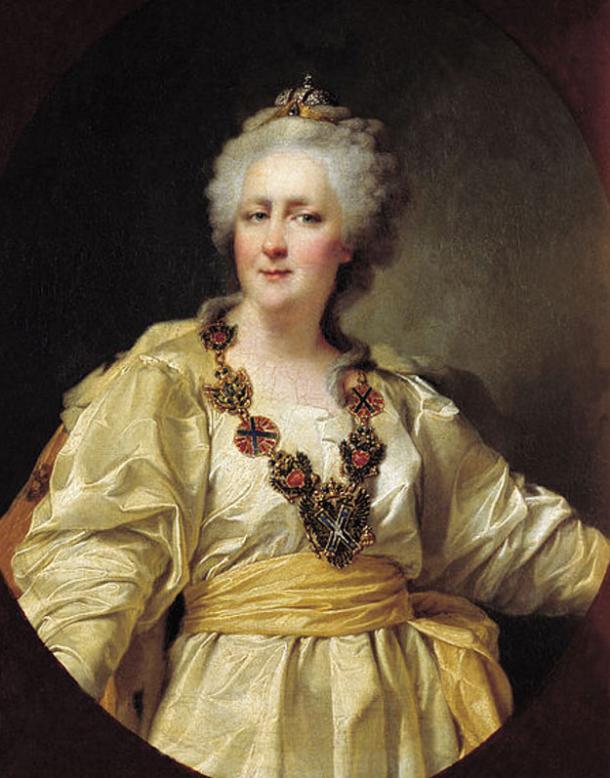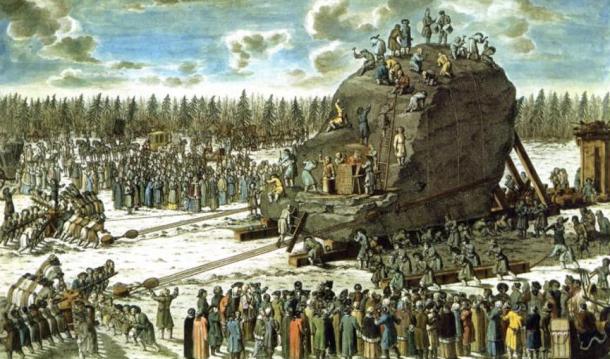The Bronze Horseman is a monument located in the Russian city of Saint Petersburg. The pedestal of this equestrian statue is known as the Thunder Stone, a monolith claimed to be the largest block of stone to have ever been moved by human beings. Today, the Bronze Horseman is one of the most recognizable symbols in Saint Petersburg. In addition, the transporting of the Thunder Stone to the city during the 18th century is also an incredible feat in itself.
Although the Bronze Horseman was created during the 18th century, its current name is derived from Alexander Pushkin’s 1833 poem, The Bronze Horseman: A Petersburg Tale , which is often considered to be one of the greatest works of Russian literature. The statue actually was the inspiration for Pushkin to write the poem. As its name suggests, this monument is an equestrian statue.
A Commemoration of Peter the Great
The Bronze Horseman is a representation of the first Emperor of Russia, Peter the Great (Peter I). Peter the Great was a ruler of the Tsardom of Russia (the Russian Empire from 1721) who lived between the 17th and 18th centuries. He is often considered to be one of most successful rulers in Russian history and he accomplished much during his reign. It was thanks to Peter that Russia was transformed into a major European power. This was achieved through Peter’s efforts to modernize and expand his country. Russia continued to exert its influence on the world stage long after Peter’s reign.
The monument was commissioned by Catherine the Great , one of Peter’s successors, and an enlightened, Westernized monarch like the first Russian emperor himself.

The Bronze Horseman statue of Peter the Great. ( mivod /Adobe Stock)
Creating the Bronze Horseman
For the creation of this grand statue, the commission was given by Catherine to a renowned French sculptor by the name of Étienne Maurice Falconet. Work on the statue began in 1770, and was finally completed 12 years later, in 1782. Falconet did not see the unveiling of his masterpiece, as the sculptor had a falling-out with his Russian patron (or, according to another source, years of arguing with the head of the Academy of Fine Arts), resulting in the former leaving the country four years before the sculpture was completed.
An inscription on the monument, written in both Russian and Latin, reads ‘To Peter I from Catherine II’. As Catherine had no legal claims to the Russian throne, the monument has been interpreted by some as an attempt by the empress to legitimize her rule by forming a connection with this illustrious monarch and representing herself as Peter’s rightful heir.

Portrait of Catherine II of Russia by Dmitri Levitzky, 1794. ( Public Domain )
Transporting the Thunder Stone Monolith
Before the work on the equestrian statue even began, the pedestal on which it would be standing on was being prepared. This is the so-called Thunder Stone, a huge granitic rock that is widely claimed to be the largest monolith to have been moved by humans.
The Thunder Stone monolith was originally located at Lakhta, an area not far from the center of Saint Petersburg. According to an ancient local legend, a piece of this monolith was split off by thunder (or more likely, perhaps, lightning), hence the name given to it. In 1768, it was determined that the Thunder Stone would form the pedestal for Falconet’s statue of Peter the Great.
It has been estimated that originally the Thunder Stone weighed a total of 1500 tons. While Falconet intended to cut the monolith before having it transported to Saint Petersburg, Catherine did not allow him to do so. Thus, the Thunder Stone was first transported to the city, and then shaped to resemble a cliff. The task of transporting the Thunder Stone fell on the shoulders of Marinos Carburis, a Greek who was serving as a lieutenant-colonel in the Russian Army .
Carburis’ plan was to wait for winter to set in, and then have the monolith dragged by the workmen on the frozen ground to the sea (Lakhta is situated about 6 km inland from the Gulf of Finland), so that it could then be transported by water to Saint Petersburg .
To further aid the transportation of the monolith, Carburis developed a metal sledge that slid over bronze spheres on a track. Remarkably, only manpower was used to move the Thunder Stone. It took 400 men 9 months to move the monolith to the sea, and in 1770, about two years after the work began, the Thunder Stone reached its destination.

An engraving depicting the transportation of the Thunder Stone. ( Public Domain )
Is Saint Petersburg Protected by the Bronze Horseman?
Finally, according to a 19th century legend, Saint Petersburg would never be captured by enemies as long as the Bronze Horseman stood in the city. Thus, during the Second World War, instead of taking the statue down to protect it from enemy bombardment, it was covered with sandbags and a wooden shelter.
There may be some truth to the legend, as the city, then known as Leningrad, was not able to be taken by the invading Nazis, despite a siege of almost 2 ½ years.
Top Image: The Bronze Horseman on the Thunder Stone monolith, St Petersburg, Russia. Source: dimbar76 /Adobe Stock
By Ḏḥwty
Updated on August 25, 2020.
Related posts:
Views: 0
 RSS Feed
RSS Feed
















 August 26th, 2020
August 26th, 2020  Awake Goy
Awake Goy  Posted in
Posted in  Tags:
Tags: 
















